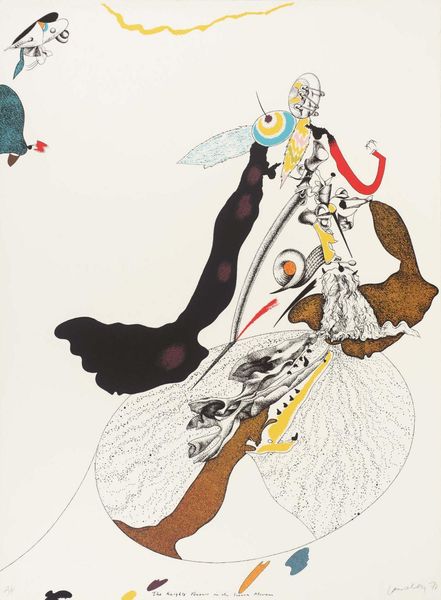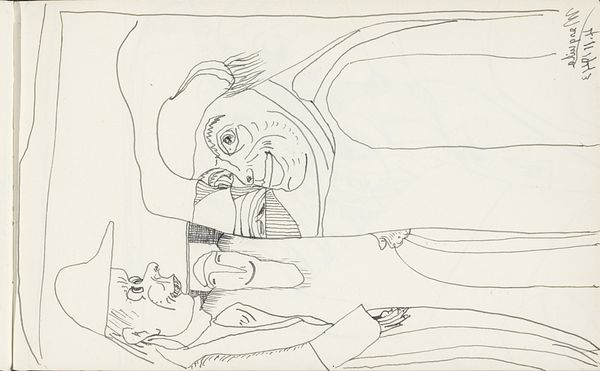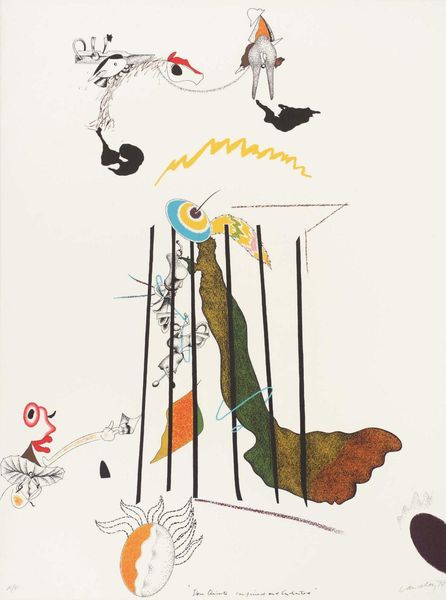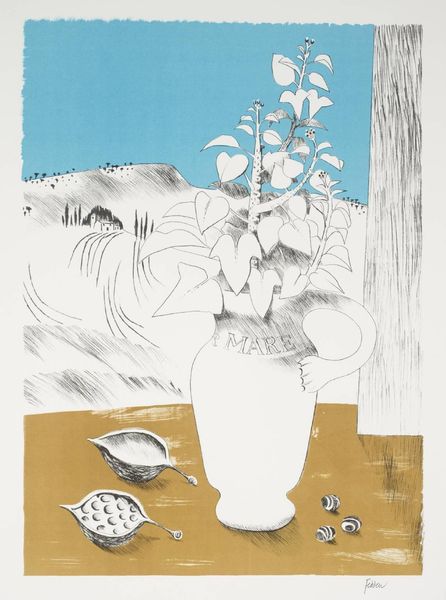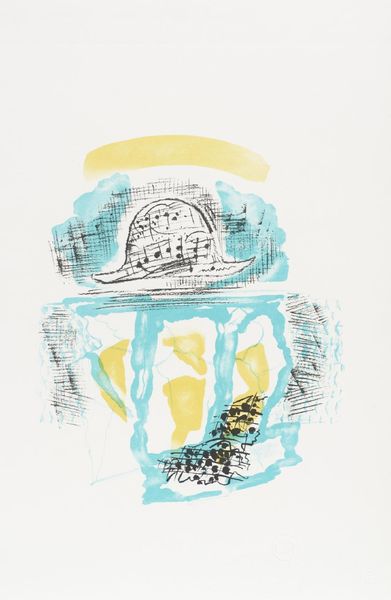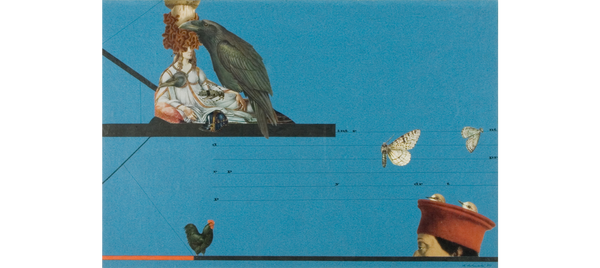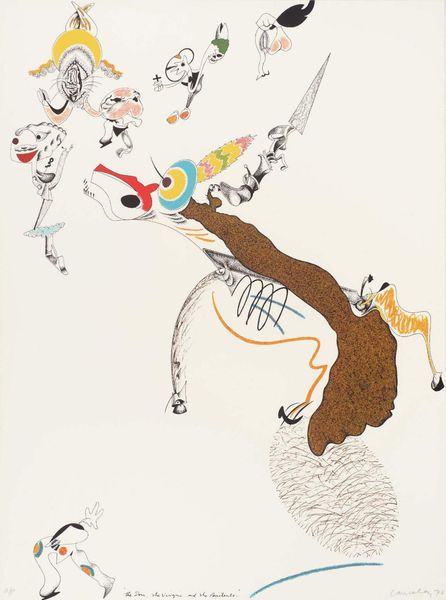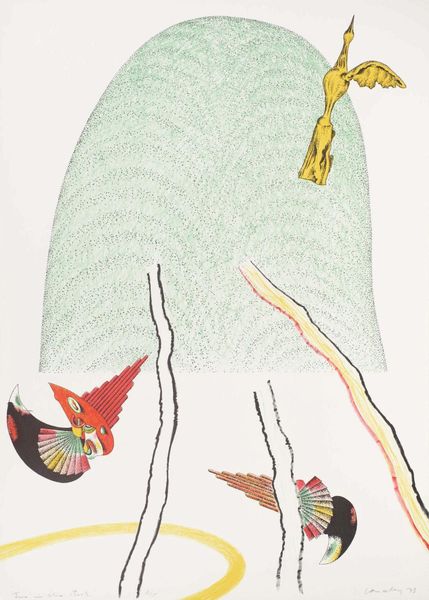
Dimensions: image: 250 x 166 mm
Copyright: © Frink Estate | CC-BY-NC-ND 4.0 DEED, Photo: Tate
Curator: Dame Elisabeth Frink's print, "Odysseus Meets his Son," at the Tate, presents a striking moment in myth. What's your initial take? Editor: Stark! It feels…almost ancient, in its simplicity. That gold eagle dominating the composition hints at something powerful and fated. Curator: Eagles are potent symbols, often linked to Zeus, embodying authority and divine intervention. Here, it could represent Odysseus' destiny being fulfilled. Editor: I love how the ship is just…there. Barely sketched, almost an afterthought. Like the journey itself is less important than the homecoming. Curator: Frink often explored themes of masculinity and power. Consider how the two figures below, presumably Odysseus and Telemachus, are rendered with such restrained emotion. Editor: True. It's a very internalized kind of reunion. More a recognition of shared strength than tearful embraces. Makes you think about inherited burdens. Curator: It's a scene laden with cultural weight, subtly yet powerfully expressed through Frink's minimalist approach. Editor: Exactly. Leaving me to fill in the silences, the unsaid history between father and son. A truly resonant piece.
